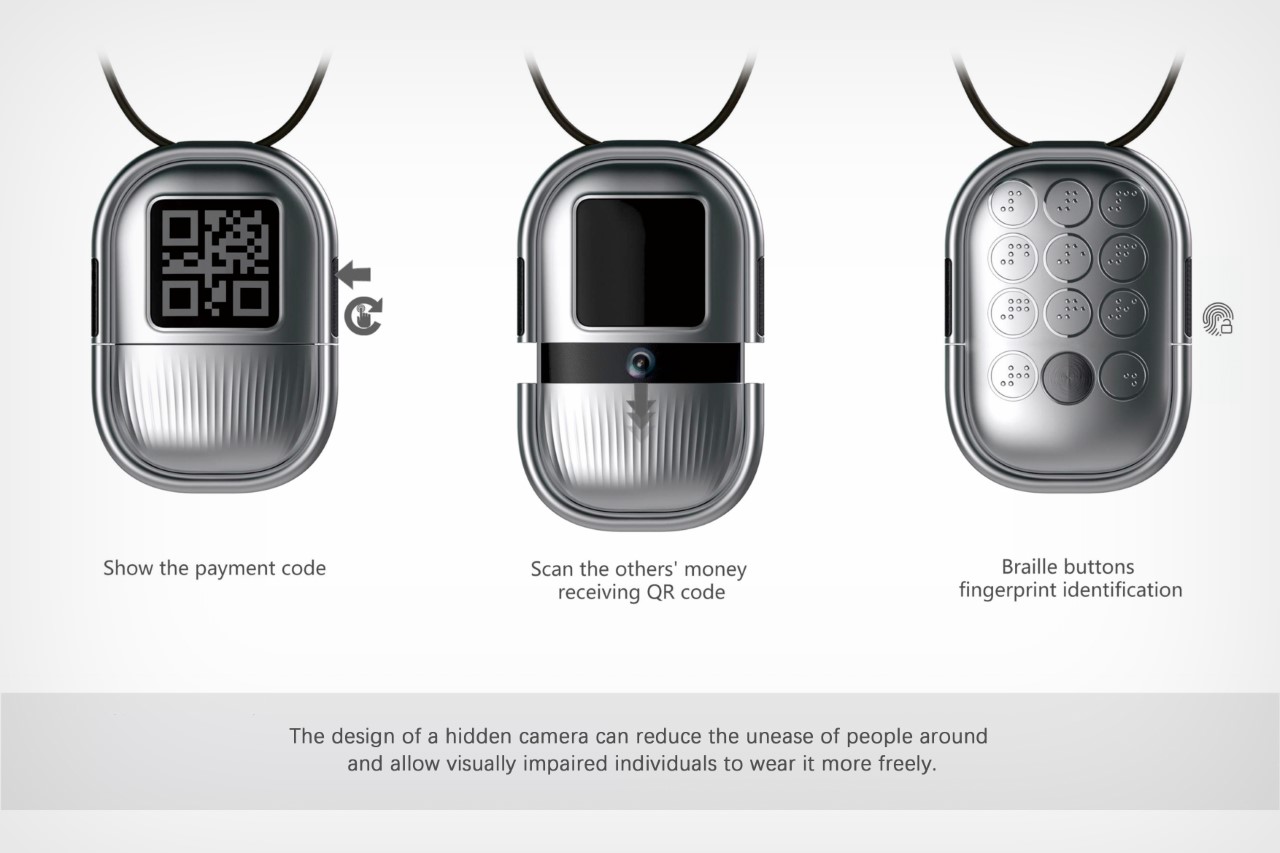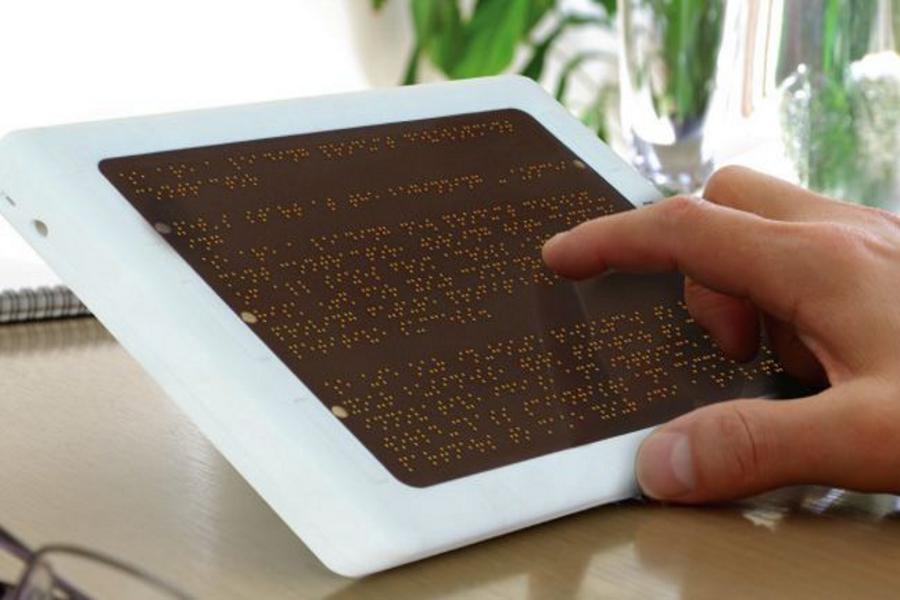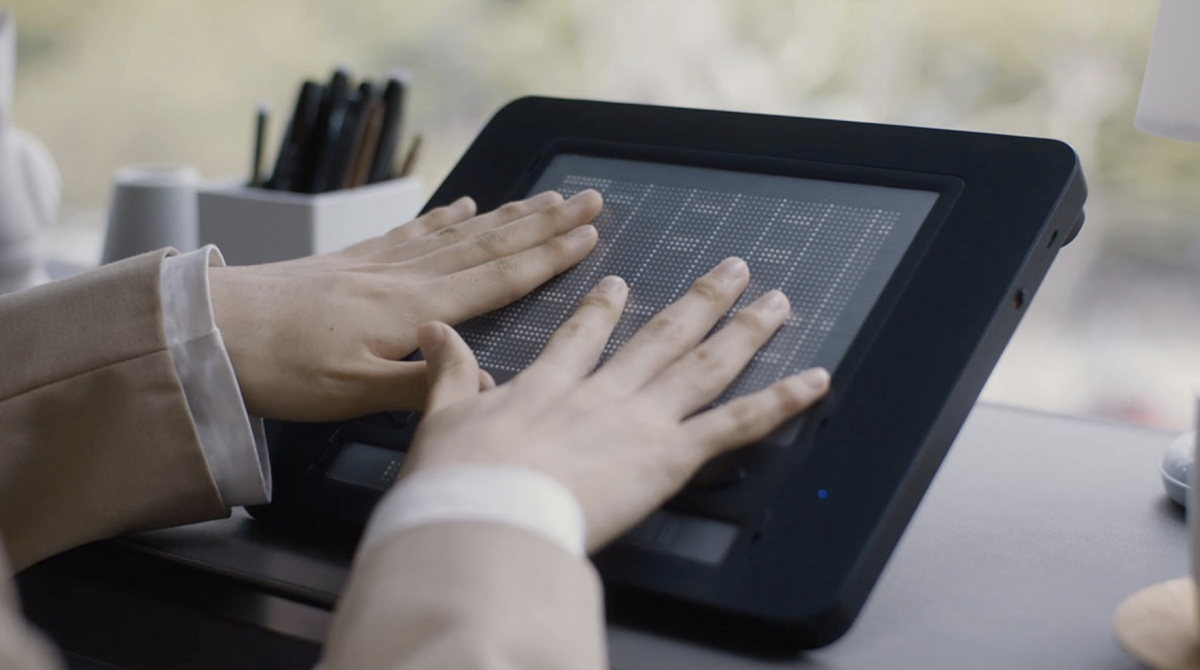Discover Cutting-edge Tools Designed for the Aesthetically Impaired
The growth of innovative tools for the aesthetically impaired represents a substantial advancement in ease of access and independence. Technologies such as clever glasses with AI capacities and mobile applications designed to offer acoustic summaries are improving everyday experiences for individuals.
Smart Glasses for Navigation

Smart glasses created for navigating are reinventing the method aesthetically impaired people interact with their setting. These advanced gadgets make use of a mix of cam innovation, artificial intelligence, and acoustic responses to offer real-time details concerning surroundings. By employing challenge detection systems, wise glasses can signal customers to possible threats, allowing safer flexibility in both unfamiliar and familiar settings.
The assimilation of GPS technology further improves navigating abilities, enabling users to receive acoustic instructions as they relocate. This hands-free technique not only fosters independence but likewise equips visually damaged individuals to browse metropolitan landscapes with increased confidence. Furthermore, many smart glasses are furnished with attributes that identify landmarks and road indicators, offering contextual information that boosts the user experience.
In addition, the development of these tools is constantly progressing, with companies working to improve the precision of item acknowledgment and expand the variety of navigational features. As smart glasses end up being much more accessible and budget friendly, they hold the potential to significantly change day-to-day live for aesthetically impaired individuals. Ultimately, these ingenious devices stand for an important step toward inclusivity, offering enhanced flexibility and a higher feeling of autonomy for individuals navigating the globe around them.

Mobile Apps for Daily Living
Exactly how can mobile applications boost the every day lives of visually impaired individuals? Mobile apps are reinventing the way aesthetically damaged users navigate their settings, manage everyday jobs, and accessibility information. These applications give vital assistance with numerous functionalities, promoting freedom and improving lifestyle.
A number of ingenious mobile applications are created particularly for everyday living. For example, applications like Be My Eyes attach aesthetically damaged users with sighted volunteers using video clip calls, permitting them to obtain real-time support with tasks such as reading tags or browsing unknown spaces. Similarly, Seeing AI, established by Microsoft, makes use of synthetic intelligence to define surroundings, read message, and identify objects, properly transforming a smart device into an effective device for day-to-day help.
In addition, navigating apps customized for the visually damaged, such as Aira and BlindSquare, offer audio-based instructions and environmental information, enabling individuals to traverse their environments securely and with confidence. Beyond navigating and instant aid, mobile apps also sustain company and job monitoring, with attributes that help customers establish reminders, develop to-do listings, and track visits. In recap, mobile applications function as crucial resources, equipping aesthetically impaired people to lead even more independent and fulfilling lives.
Wearable Technologies for Aid
Empowerment via modern technology is increasingly evident in the world of wearable gadgets designed to aid visually damaged people. These ingenious tools incorporate effortlessly into everyday life, improving navigating and offering vital comments to users. As an example, wise glasses outfitted with electronic cameras can identify faces and check out message aloud, enabling users to communicate even more confidently in social and specialist settings.
Another noteworthy advancement is making use of haptic comments systems in wearable devices. These systems use vibrations or various other responsive signals to convey info concerning the user's atmosphere, such check my source as barriers or modifications in terrain, improving flexibility and safety. Wearable technologies also include wristbands that link to mobile phones, signaling customers to notifications via subtle vibrations, therefore improving connection without dependence on aesthetic cues.
As these modern technologies continue to progress, they are not only improving freedom for aesthetically impaired people yet additionally cultivating a greater feeling of addition in culture. By connecting the gap between obstacles encountered in day-to-day living and the possibility for autonomy, wearable innovations act as crucial devices in the pursuit for equality and empowerment for those with visual impairments.
Audio Description Tools
Audio summary devices play a vital role in boosting availability for aesthetically damaged individuals, providing them with the ability to engage with visual media. Voice-activated assistive devices. These devices offer narrated descriptions of essential visual aspects in films, television programs, and live efficiencies, ensuring that users can totally comprehend the context and feelings communicated with visuals
Audio summary can be incorporated into various systems, including streaming solutions, movie theater screenings, and live cinema. Several preferred streaming services now consist of audio summary as an availability feature, enabling audiences to select it conveniently. Along with mainstream media, specialized apps additionally exist, supplying audio descriptions for art exhibitions, galleries, and various other social occasions.
The effectiveness of audio summary depends upon the skill of the narrators, who need to convey visual information succinctly without interfering with the original audio. Technologies in this area are additionally leading the way for even more personalized experiences, where customers can readjust the level of information and pacing according to their choices.
Braille Innovations and Devices
Braille advancements and devices have actually significantly transformed the means visually damaged people engage with message and info. Modern developments have led to the growth of versatile devices that enhance proficiency and independence among users.
Additionally, portable Braille advice notetakers combine standard Braille input with contemporary performances, helping with note-taking, organizing, and paper editing and enhancing on the go. AI-powered visual aids. These portable gadgets frequently include text-to-speech abilities, connecting the gap between Braille and acoustic information
In addition, ingenious Braille printers have actually emerged, enabling individuals to generate Braille tags, papers, and educational materials efficiently. This ease of access fosters better involvement in educational and specialist atmospheres, ultimately promoting inclusivity.
Moreover, study into wise Braille technologies continues to expand. Instruments that incorporate expert system are being checked out to offer real-time navigating support and contextual information, boosting the customer experience in varied setups. In general, these technologies reflect a dedication to empowering visually damaged individuals with modern technology, ensuring they can quickly gain access to and involve with the world around them.

Conclusion
The improvement of innovative devices for the aesthetically damaged substantially enhances freedom and high quality of life. These modern technologies not just foster higher addition however also promote autonomy in click this daily tasks, inevitably contributing to an extra fair and available culture for visually damaged individuals.
As smart glasses come to be more budget friendly and accessible, they hold the prospective to substantially transform daily life for aesthetically damaged individuals. Mobile apps are transforming the method aesthetically damaged users navigate their settings, handle day-to-day tasks, and access info. Applications like Be My Eyes attach aesthetically damaged users with sighted volunteers through video phone calls, permitting them to get real-time help with jobs such as checking out tags or browsing unknown areas.Additionally, navigation apps tailored for the visually impaired, such as Aira and BlindSquare, offer audio-based directions and environmental info, enabling customers to traverse their surroundings securely and confidently.The innovation of ingenious tools for the visually impaired dramatically boosts self-reliance and high quality of life.